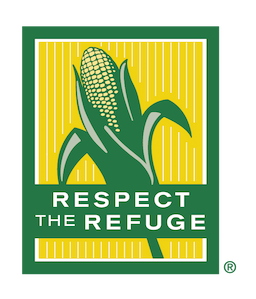5 MIN READ
Corn Replanting Decisions
February 21, 2021
Overview
Wet conditions and below-average temperatures can put stress on corn germination and emerging seedlings causing concern about reduced corn stands. Before deciding to replant, evaluate the stand for population and uniformity and compare the yield potential of the existing stand with the yield potential of the replant, as well as insurance or government program restrictions. Replanting is time-consuming and costly to producers, but it can be a viable agronomic practice given the right conditions.
Compare Replant Potential to Current Stand Assessment
Yield potential changes as corn planting dates become later; therefore, it is important to evaluate the return on replant investment. Time and effort may be warranted where conditions have improved. Evaluate reduced corn stands and compare to the percent of optimum yield a replanted stand could yield (Table 2).
Spot, Keep, or Terminate Corn Stands
When to Spot Plant. Successful spot planting could be applied to large areas of fields with early-season loss: corners, ends, and washes. It is best done when these areas have nearly complete loss (less than 25% of the original stand surviving).1 While these areas may be successfully replanted, special consideration should be given to area-specific agronomic management, inputs needed, and weather influences on the ultimate outcome. The same corn products should be used when replanting a portion of a field. Inter-planting--into a poor stand--generally creates an environment of competition where the original plants are larger and compete with newly emerging corn plants.
When to Keep the Stand. As populations drop below 20,000 plants per acre, grain production is not compensated from reduced competition within the row.1 An economic analysis of seed cost, market price, and expected yield is individual for each field. As irrigated corn populations drop to 24,000 plants per acre, yield can become noticeably reduced by 6 to 9%. This similar yield loss is expected for dryland corn with stands reduced to 18,000 to 20,000 uniform plants per acre.2
When to Terminate and Replant. Demonstrations at Scott, Mississippi simulated a field with 100% stand loss 25 days after planting (and replanted to 36,000 seeds per acre). The replanted field had a 16.25 bushel per acre yield reduction compared to the check left as originally planted. In another simulation, a 30% stand loss 25 days after planting (and replanted to 36,000 seeds per acre) had only a 6 bushel per acre yield reduction compared to the check left as planted.3 These scenarios of replanting demonstrate yields can be improved to near expectations when stands are completely removed before replanting.
Corn Product Seed Decisions
Corn Products with Disease Tolerance. Later planted corn fields can be exposed to foliar diseases such as gray leaf spot and northern corn leaf blight at earlier growth stages. Larger areas of leaf necrosis are associated with earlier infections during favorable conditions.
Corn Products with Insect Protection. Late-planted corn may be at greater risk for second generation European corn borer damage. Such damage results in stalk breakage, ears dropping off, and kernel feeding. Insect damage also creates pathways for diseases to infect.4 Corn rootworm can cause greater stress to later planted corn because the larvae feed on younger roots beginning to form nodal root systems instead of the well-established roots of earlier planted corn.5 Western bean cutworm (WBC) is a third pest that targets late-planted corn. Typically, the moth flight of WBC peaks in mid-July, a time when late planted corn could be in late whorl stage while earlier planted fields have tassels. Late whorl is the corn stage preferred by WBC for egg laying.6 Traits offer season-long protection and should be considered for insect protection in late-planted corn.
Corn Products with Earlier Relative Maturity. Consider planting full-season corn products with adequate pest protection. Growing degree day requirements decrease as planting occurs after May 1st. Late corn planting research has disagreed on actual yield loss differences between corn product maturities.7 End-of-season scenarios are unpredictable. However, corn products expected to mature safely in the fields can still be planted. Have flexible plans for drying grain moisture and storage at harvest.
Seeding Rate. Optimal seeding rates do not necessarily need to increase with later planting dates. Warm soil temperatures give seeds a vigorous advantage with late planting dates. Seeding rates in mid to late May can be close to the target for final plant population.1
Old Stand Removal Options
Tillage. Best option for corn stands with multiple herbicide tolerant traits and has no plant-back restrictions. A two-tillage pass may be needed depending on the growth stage of the original stand. May not be a good option where conservation tillage is desired for lack of moisture at planting.
Herbicides. Corn with stacked herbicide tolerance traits can be terminated with clethodim products labeled for removal of corn. This option comes with a waiting interval to plant. To avoid plant back restrictions for small corn (V1 to V3) growers can apply a combination of paraquat and metribuzin.8
Corn with only one herbicide tolerance trait can be terminated with herbicides it is susceptible to. Corn will need two to four leaves of growing green tissue for herbicides to be effective and complete kill could take longer than three weeks. Consult your chemical or Bayer representative for local tank mix recommendations to remove corn stands stacked with herbicide tolerant traits.
Sources
1Nielsen, R.L. 2017. Corn replant considerations 2017. Purdue University. http://www.kingcorn.org/news/articles_17/CornyDecisions-0508.html.
2Larson, E. and Bond, J. 2013. Corn replanting guidelines and management issues with wet weather. Mississippi State University.
3Evaluation of Genuity® VT Triple Pro® Corn at different planting dates. 2010. Monsanto Learning Center Summary. Scott, Mississippi.
4European corn borer (Ostrinia nubilalis Huber). Purdue University. European Corn Borer E-series 17-W.
5Nielsen, R.L. 2002. Timing of crop stress is critical! Purdue University. Corny News Network.
6Wright, B., Hunt, T., and Ohnesorg, W. Begin scouting for western bean cutworm eggs in corn. University of Nebraska – Lincoln.
7Nielsen, R.L. 2019. Hybrid maturity decisions for delayed planting. Purdue University.
8Ikley, J., Legleiter, T., and Johnson, B. 2017. Methods to control “volunteer” corn in a corn replant situation. Purdue Extension.
3016_S1








